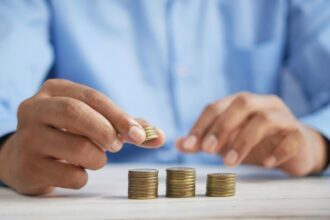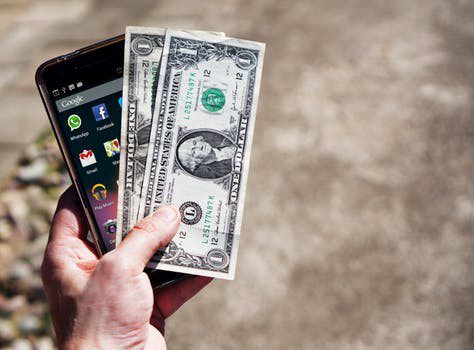
A bank account number consists of a sequence of numbers, occasionally letters, intended to identify a bank account and its owner uniquely. Financial institutions may then safely grant access to the account for sending and receiving payments.
Social security numbers were previously used for this function. However, their frequent use led to increased identity theft and fraud. Banks have been progressively removing this practice. Though social security numbers are still in use, checking account numbers are now utilized for banking.
So, how do you find them? – Let’s figure it out.
How Many Digits Does an Account Number Have?
Usually consisting of eight to twelve digits, account numbers can technically contain up to seventeen. Nearly every financial transaction a person performs these days is linked, in one way or another, to an account number. A bank account number tells a bank what account you wish to deposit or withdraw money from.
What is the Purpose of a Bank Account Number?
Bank account numbers indicate to banks which account to deposit or withdraw money from.
Users can utilize a bank account number in business for several purposes, including:
- Payments to other companies
- Direct deposits
How Does an Account Number Differ From a Routing Number?
Think of a hotel where your money resides to help understand the difference between a routing number and an account number. Similar to a hotel address, the routing number is the same for every visitor to that specific hotel.
But your account number functions much like your hotel room number. It uniquely identifies you and specifies more precisely where to send a package addressed to you.
Your account number is the particular savings or checking account linked to you; your routing number, sometimes called an ABA routing number or an ABA number (American Banks Association), informs financial processing algorithms and people which bank you originate from.
This guarantees that financial institution personnel and computer systems understand where the money in a transaction is coming from or going to.
Which Comes First, the Account Number or the Routing Number?
Whether writing a personal check, starting an electronic payment, or setting up a direct deposit for your work paycheck, any basic banking transaction needs both an account number and a routing transit number.
Invariably, the account number comes after the routing number.
Anyone wishing to find the routing number for a certain bank can easily do so online, similar to searching for a hotel location.
However, just like a social security number or a debit card PIN code, it is important to keep your account number private, as it is a unique identifier.
If someone knows which bank you have a checking account with, your unique account number is all they need to start a money transfer from your account into their own. They could quickly locate the rest online, including the bank routing number.
Is Your Debit Card Number the Same as Your Account Number?
Your account number differs from your debit card’s sixteen-digit number. Debit cards and account numbers serve distinct purposes, even though they may connect to the same account.
The bank and its internal systems use the exclusive account number, while the card’s network systems create and use the debit card number.
How To Locate Your Bank Account Number?
You can find your account number in several places based on what is most convenient for you. Your account number is on checks, bank statements, online banking account profiles, and the bank mobile app. Although you must give verification information over the phone, you can also get it by calling your bank directly.
Where Can You Find the Account Number On a Check?
A bank account number can be found most easily near the bottom of a check. In particular, the checking account number is nearly always the second set of numbers from the left when you open your checkbook and look at the bottom of your checks.
The nine-digit routing number for your bank is the first set of numbers; it is the same for everyone who uses that bank. On either side of an account number are typically two bracketing symbols. It generally looks like this:
|:02567890:|
In the Banks Statements
Your bank statements also include your account number. Depending on whether you have chosen paperless billing, these could be mailed to you each month or saved online in your online banking account. An account number on a bank statement often appears close to the top of the document. Usually, it has this label:
Account No. 0234567890
On the Bank’s Website
To view your bank account information, go to your bank’s website and log in using a computer or mobile device nearby.
Finding the account numbers for each of your several accounts— such as a savings account and a checking account, for instance—usually involves going to the particular account and searching for the account number.
On the Mobile Banking App
You can retrieve your account number using your mobile banking app, just as you would through your bank’s website.
Reaching Out to Your Bank Directly
If everything else fails, you may get your crucial account information by contacting your bank directly. The customer support number is on the reverse of your debit card. If you do not currently possess your debit or credit card, you can look up the contact details of your financial institution online.
Is an IBAN identical to an account number?
You can use your account number and an internationally recognized code called an IBAN to send or receive overseas payments.
An IBAN code does not replace your current account number. Instead, it facilitates the identification of your account by banks abroad to send or receive international payments.
Security Measures Banks Enforce to Protect You
Banks have implemented several security protocols to prevent this. One such measure is multi-factor authentication, which requires several kinds of identification before granting access to an account. If your bank has ever given you a one-time PIN code to enter on your phone, you have engaged in multi-factor authentication.
Security questions and automatic logouts after extended inactivity are two more measures to protect your money and account information.
Bottom Line
Like your fingerprint, your bank account number is uniquely yours. This important piece of information will be required for a variety of banking operations. You should safeguard this information as much as possible by securely banking online and properly discarding paper checks and statements.
You can also get support from fintech companies to help you in creating an online bank account. They can help with money transfers, VISA debit cards, and bill payments, as well as provide customer support and advanced account management tools.








